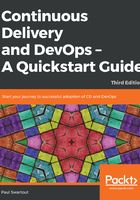
Location, location, location
Ideally, you should plan to run your investigation(s) collocated (so that everyone is in the same physical location) as this allows for greater human interaction, building of rapport—which is essential for building trust—and the general ebb and flow of conversation in what can be highly interactive exercises.
Realistically, you may well have remote teams or individuals who you need to be involved. Some may work from home or another office or in another country. If this is the case, you'll need to be a little more creative in how you approach things as you'll need to make things as seamless as possible. As stated previously, the ideal situation is to have everyone you need in the same place. Depending on the numbers of individuals involved and where they normally physically reside will determine the best approach to take—for example, as follows:
- If the majority of the engaged contributors are collocated in one office, then consider bringing the remote team(s) or individuals to them—budget permitting
- If the majority of the engaged contributors are based in a remote location, then consider taking the the local team(s) or individuals to them—again, budget permitting
- If neither of these are viable, then consider using a reliable and high quality video conferencing solution (voice conferencing just isn't good enough for what you'll be doing) along with some real time collaboration software
If you are forced to run the session(s) across two or more locations, then you may also need take into account challenges around time zones and come up with workable options (that is, don't expect your Boston-based team to remotely attend a workshop at 5:00 EST just because it's easier for the UK team). There will have to be some creative planning around this.
As you can see, before you embark on the challenge of exposing the elephant in the room, there is some pre-work preparation you need to do.
Throughout this chapter, you have been introduced to terms such as "investigation", "elephant exposure", and "retrospection". In relation to your software delivery process, these all mean pretty much the same thing: gathering information and data on how the process works end to end so that you can highlight the issues, which can then be rectified. We'll now move on to some of the ways you can gather this information and data, but before we do, let's clear a few things up.